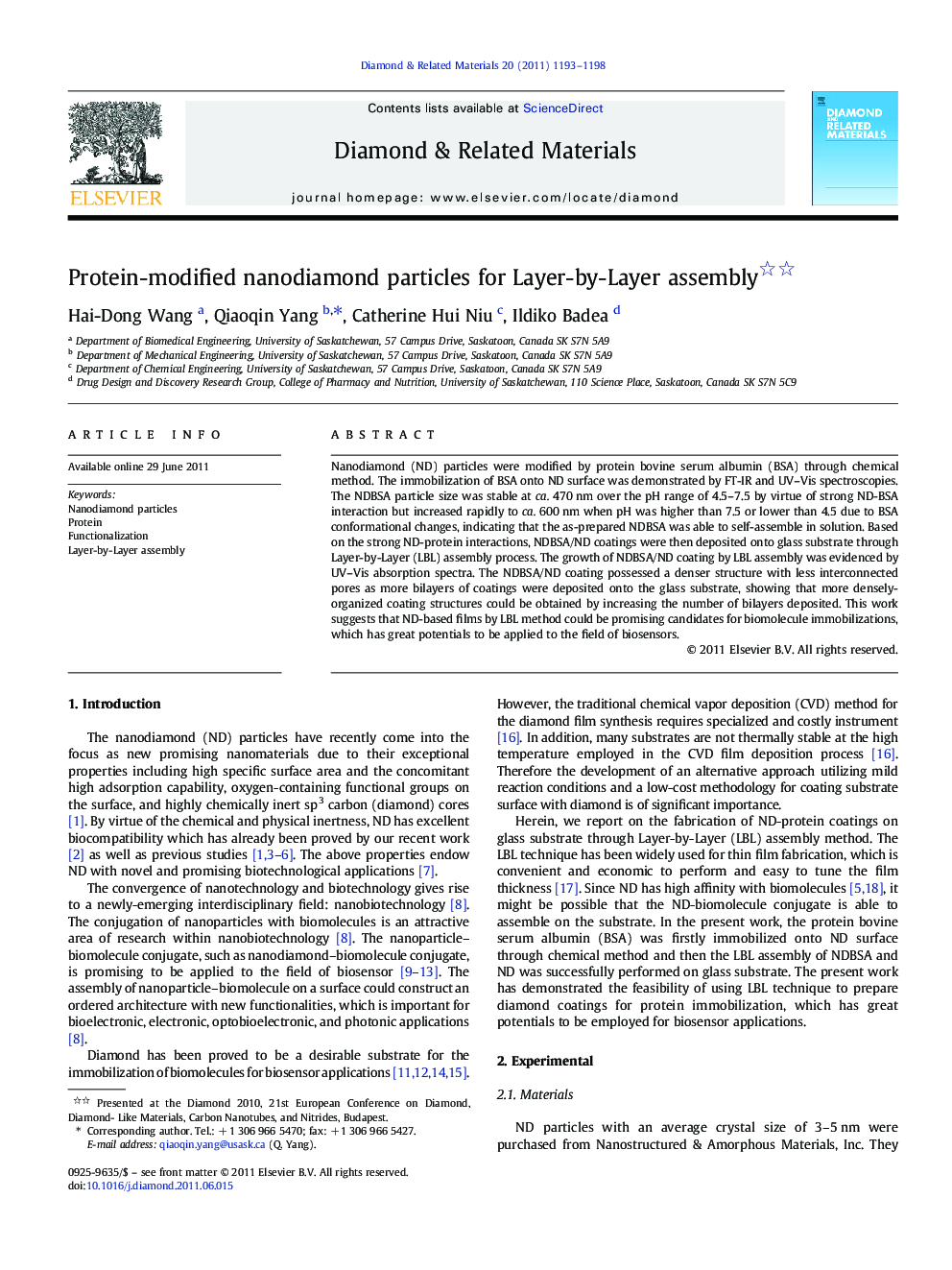| Article ID | Journal | Published Year | Pages | File Type |
|---|---|---|---|---|
| 701879 | Diamond and Related Materials | 2011 | 6 Pages |
Nanodiamond (ND) particles were modified by protein bovine serum albumin (BSA) through chemical method. The immobilization of BSA onto ND surface was demonstrated by FT-IR and UV–Vis spectroscopies. The NDBSA particle size was stable at ca. 470 nm over the pH range of 4.5–7.5 by virtue of strong ND-BSA interaction but increased rapidly to ca. 600 nm when pH was higher than 7.5 or lower than 4.5 due to BSA conformational changes, indicating that the as-prepared NDBSA was able to self-assemble in solution. Based on the strong ND-protein interactions, NDBSA/ND coatings were then deposited onto glass substrate through Layer-by-Layer (LBL) assembly process. The growth of NDBSA/ND coating by LBL assembly was evidenced by UV–Vis absorption spectra. The NDBSA/ND coating possessed a denser structure with less interconnected pores as more bilayers of coatings were deposited onto the glass substrate, showing that more densely-organized coating structures could be obtained by increasing the number of bilayers deposited. This work suggests that ND-based films by LBL method could be promising candidates for biomolecule immobilizations, which has great potentials to be applied to the field of biosensors.
► The Layer-by-Layer (LBL) assembly technique is used, for the first time, for the fabrication of nanodiamond-protein coatings. ► The present LBL method could be employed to prepare biomolecule-functionalized diamond films for biosensor applications. ► The LBL method could be a desirable substitute for the traditional CVD process to prepare nanostructured diamond coatings for biomedical applications.
